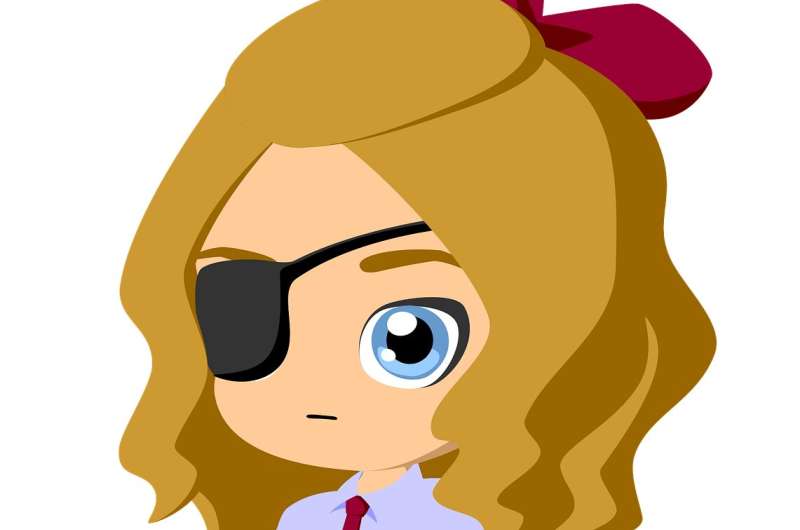This article has been reviewed according to Science X's editorial process and policies. Editors have highlighted the following attributes while ensuring the content's credibility:
fact-checked
peer-reviewed publication
trusted source
proofread
No negative impact from prolonged eye patching on child's development or family stress levels

Parents of children with unilateral congenital cataracts (UCC) may wonder how long to patch, and whether extended periods of patching might affect their child's development or cause undue stress for the child or family, particularly among children with poor vision in the treated eye. A first-of-its-kind study has now found that families whose children have UCC can rest easier, knowing that continuing to patch throughout the preschool years does not negatively impact parenting stress or child development, motor functioning, and self-perception when compared to children for whom patching was abandoned.
The research is published in the journal JAMA Ophthalmology.
To the authors' knowledge, this is the first study to look at the possible negative impact of patching on child and family functioning that focuses on children with UCC or that focuses on children with poor vision in the affected eye.
"Our results are important for the group of children who are born with a unilateral congenital cataract. Patching is prescribed for these children for half of their waking hours throughout the first 5–6 years of life. Thus, many families and health care providers wonder whether they are hurting these children by asking them to continue patching—in the hopes of improving their vision, even when they do not see well in the treated eye," said Carolyn Drews-Botsch, principal investigator and chair of George Mason University's Department of Global and Community Health.
"These results do not support changes to the current practice guidelines of patching children. Parents may be reassured that continuing to patch is not likely to cause significant harm to families or children," added Drews-Botsch.
Children with unilateral congenital cataracts (UCC) are born with cloudy or opaque vision in one eye that--if left untreated--can result in blindness in that eye. The condition is treated, as it is in adults, with surgery. After the surgery, occlusion therapy is prescribed to avoid lazy eye (deprivation amblyopia). Also known as patching, occlusion therapy is when the child wears a patch covering the eye that did not have the cataract, and it is needed to allow vision in the affected eye. However, even with the best treatment, about half of these children will remain legally blind in the treated eye.
Parenting stress, child behavior problems, motor functioning, and child self-perception were similar for all levels of patching, including children who wore patches fewer than 15 minutes a day and those who were reported to be patched at least 2 hours a day. The study compared children with UCC with poor vision in the affected eye whose parents continued patching throughout the first 5 years of age to children with UCC whose parents discontinued patching at some point during the first 4 years of age.
These results were somewhat surprising, since anecdotally, patching is believed to cause family stress because it can be difficult for parents to get children to wear the patch consistently for the required amount of time, and while patched, the children are severely visually impaired, possibly impairing development of other skills.
The study was conducted in 2023 using data collected between 2006 and 2016 in the Infact Aphakia Treatment Study, which included participants with a vision of 20/2000 (visual acuity) or worse.
Co-authors on the paper include Scott Lambert from Stanford University, Marianne Celano and George Cotsonis from Emory University; Genie Hartmann from Akron Children's Hospital; and Assistant Professor in Mason's Department of Global and Community Health Jaffer Zaidi.
More information: Carolyn Drews-Botsch et al, Patching in Children With Unilateral Congenital Cataract and Child Functioning and Parenting Stress, JAMA Ophthalmology (2024). DOI: 10.1001/jamaophthalmol.2024.0800


















